The cost of mixtures
The total price of factory mixes depends on:
- the name of the manufacturer;
- the presence of expensive additives;
- strength grades;
- the degree of sand purification;
- the size of the wholesale purchase;
- region and distance of delivery from the warehouse.
The price of the most popular ready-made cement-sand mixtures on the Russian market in Moscow and the Moscow region
| Mix name | Bag weight, kg | Price per bag, rubles |
| Polygran М150 | 25 | 70 |
| BAG М150 universal | 50 | 160 |
| Magma M150 universal | 30 | 140 |
| Putler Classic cement plaster | 25 | 170 |
| Knauf Zokelputz | 25 | 240 |
| Knauf Grunband | 25 | 280 |
| Concrete M150 | 50 | 160 |
| EK TT 30 | 25 | 220 |
| Quartz M200 dry masonry | 50 | 170 |
| Petrolite М300 | 25 | 90 |
| Real DSP M100 | 25 | 65 |
On large construction sites, mixtures are often ordered in bulk or in the form of solutions. The cost of dry CPF ordered in this way will be 2500-3000 rubles per ton, ready-made mortar - 3500-4500 per cubic meter.
The cheapest and most labor-intensive option will be to make it yourself. For example, for 1 m3 of M150 masonry mortar, you will need 8 bags of M400 cement, 50 kg each, at a price of 200 rubles each, and at least 1.1 m3 of river or washed quarry sand at a cost of 1000 per cubic meter. The total consumption is 2700 rubles per 1 m3 of the finished composition or 2000-2200 kg of dry mix.
Scope of application
Cement-sand mixtures are used for many different works, the main of which are plaster, brick or cinder block laying, floor screed. The ratio of the components in the composition of a particular material strongly depends on the permissible scope of its application, indicated on the packaging, and the strength grade:
1. Cement-sand plaster mixes for interior work usually contain a small amount of cement, lime additives and have a grade not higher than M100. Especially fine and homogeneous sand is selected for them.
2. Universal mixes are suitable for masonry, internal and external plaster, to a limited extent - for screed. Their cement content is average, and various plasticizers are often added. Typical brand is M150.
3. Masonry mixes are suitable for the construction of mid-rise brick buildings, floor screed for covering, external plastering to protect against high humidity. They can have a high cement content, hydrophobic, anti-shrink, frost-resistant additives, plasticizers. The widespread trade mark is M200.
Application area
Since PShchS are notable for their low cost and excellent moisture absorption, they have gained extraordinary popularity and are widely used as a universal building material. The compositions are used for the following works:
- creation of concrete and asphalt pavements;
- compaction and leveling of layers for laying road materials;
- formation of the main and ballast layer of railway lines;
- production of asphalt concrete mixtures.
The mixtures are excellent for compacting layers in road works. PShchS are indispensable for the construction of asphalt, concrete and other sites, crane runways. The composition is widely used for balancing railway embankments. In addition, it is used for the preparation of various asphalt-concrete mixtures.
To perform any special construction work, the proportion of gravel and crushed stone in sand-crushed stone mixtures can be increased to 70% (enriched composition), and sometimes up to 90% (natural composition).
Also, a special gradation of PShchS is used from C1 to C13, which is focused on the size of the crushed stone fraction.
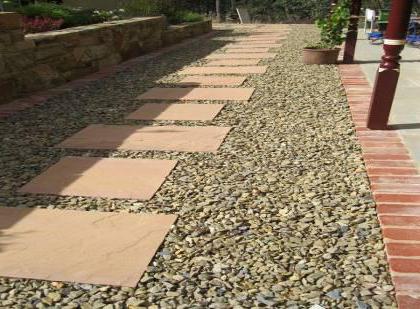
The most common are free-flowing mixtures C2, fractions of which are up to 20 mm, mixtures of C4 and C5 (fractions up to 80 mm) and C6, ranging in size from 0-40 mm.If it is necessary to use sand and crushed stone mixtures for wedging, it is recommended to choose fine-grained materials marked C12 (size from 0 to 10 mm) or C13 (fractions up to 5 mm).
Depending on the field of application, this building material can be divided into the following types:
- mixtures used to form the base of airfields and road surfaces;
- free-flowing mixtures that are used for ballasting the embankment on the railway;
- compositions for the preparation of all types of asphalt concrete mixtures.
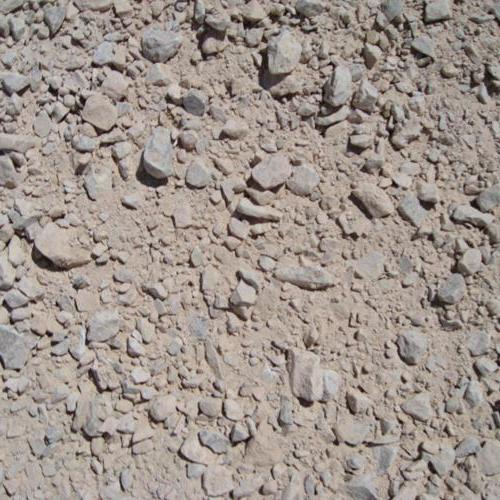
In terms of grain size, the C4 crushed stone-sand mixture is close to natural crushed stone, but unlike it, it has a more affordable cost, better compaction qualities and is characterized by ease of use. It is these qualities that made this building material so popular and in demand at almost all construction sites.
Features of the calculation of sand-cement mortar
The proportions of the components are selected so that the small fractions of the filler fill the space between the large ones evenly. In this case, the material consumption and its density are higher than in conventional mixtures. To account for the costs of sand concrete M 300 for a certain type of work, the total volume of concrete is first determined.
How to determine the volume of the solution:
- Casting monolithic walls, reinforced concrete products - calculations are carried out using standard geometric formulas (reinforcement is not taken into account).
- Masonry - technological rates of material consumption.
- Pouring floors and plaster - calculating the total surface area and the intended layer of mortar. As a rule, the average distance from the base to the lighthouses (markings) is measured in several places in the area.
On the packaging of the mixture, costs are usually indicated based on per square centimeter, provided that a layer with a thickness of 1 centimeter is created. The average values on the package are usually 18-22 kilograms. To get the flow rate per cubic meter, multiply the resulting value by 100.
How to reduce the cost of sand concrete:
2 Normative references
In this standard, references are made to the following standards:
GOST 3344-83 Crushed stone and slag sand for road construction. Technical conditions
GOST 5180-84 Soils. Methods for laboratory determination of physical characteristics
GOST 6613-86 Woven wire meshes with square cells. Technical conditions
GOST 8267-93 Crushed stone and gravel from dense rocks for construction work. Technical conditions
GOST 8269.0-97 Crushed stone and gravel from dense rocks and industrial waste for construction work. Physical and mechanical test methods
GOST 8735-88 Sand for construction work. Test methods
GOST 22733-2002 Soils. Laboratory method for determination of maximum density
GOST 24104-2001 Laboratory balance. General technical requirements * _______________ * On the territory of the Russian Federation, GOST R 53228-2008 is in force: from January 1, 2010 in terms of newly developed and modernized scales; from January 1, 2013 in terms of weights developed before January 1, 2010.
GOST 25584-90 Soils. Method for laboratory determination of filtration coefficient
GOST 28622-90 Soils. Method for laboratory determination of the degree of heaving
GOST 29329-92 * Scales for static weighing. General technical requirements _______________ * On the territory of the Russian Federation from 01.01.2010, GOST R 53228-2008 has been in effect, hereinafter in the text. - Note from the manufacturer of the database.
GOST 30108-94 Building materials and products. Determination of the specific effective activity of natural radionuclides
Note - When using this standard, it is advisable to check the validity of reference standards in the public information system - on the official website of the Federal Agency for Technical Regulation and Metrology on the Internet or according to the annual information index "National Standards", which was published as of January 1 of the current year, and on the issues of the monthly information index "National Standards" for the current year. If the reference standard is replaced (changed), then when using this standard, the replacement (modified) standard should be followed. If the reference standard is canceled without replacement, then the provision in which the reference to it is given applies to the extent not affecting this reference.
4 Acceptance rules
4.1 Crushed stone and mixtures must be accepted by the technical control department of the manufacturer.
4.2 Acceptance and delivery of crushed stone and mixtures is carried out in batches. A batch is considered the amount of crushed stone (one fraction or mixtures of fractions) or a mixture specified in the supply agreement, simultaneously shipped to one consumer in one train (wagon) or ship. When shipped by road, a batch is considered to be the amount of material shipped to one consumer during the day.
4.3 To check the conformity of the quality of crushed stone and mixtures to the requirements of this standard, acceptance control and periodic tests are carried out.
4.4 Acceptance control at the manufacturer is carried out daily by testing a combined sample of crushed stone or a mixture, selected in accordance with GOST 8269.0 from each processing line. During acceptance control, it is determined for crushed stone and mixtures:
- grain composition;
- the content of dust and clay particles;
- content of clay in lumps;
- content of crushed grains in crushed stone from gravel.
(Modified edition, Amendment No. 2).
4.5 During periodic tests, it is determined:
- once every 10 days - the content of lamellar (flaky) and needle-shaped grains;
- once a quarter - strength (abrasion); water resistance plasticity - for crushed stone used as an independent material and mixtures; filtration coefficient; bulk density; stability of the structure of crushed stone against decay; the degree of heaving;
- once a year - frost resistance, specific effective activity of natural radionuclides and class of crushed stone and mixtures.
The specific effective activity of natural radionuclides and the class of crushed stone and mixtures are determined in specialized laboratories at duly certified gamma-spectrometric installations or in radiation-metric laboratories of the supervisory authorities.
In the absence of geological exploration data on the radiation and hygienic assessment of the deposit and the conclusion on the class of crushed stone and mixtures, the manufacturer preliminarily evaluates the developed areas of rocks directly in the quarry or in the finished product warehouse in accordance with GOST 30108.
(Amendment, IUS 8-96).
4.6 Sampling and preparation of samples of crushed stone and mixtures for quality control is carried out in accordance with the requirements of GOST 8269.0.
Control points for preliminary radiation and hygienic assessment of rocks and the class of crushed stone and mixtures are selected in accordance with GOST 30108.
(Modified edition, Amendment No. 2).
4.7. The consumer, when checking the quality of crushed stone and mixtures, must apply the procedure for sampling from vehicles provided for in GOST 8267.
4.8 The amount of crushed stone or mixtures supplied is determined by volume or mass in accordance with the requirements of GOST 8267.
4.9 When shipped to the consumer, each batch of crushed stone and mixtures is accompanied by a quality document, which indicates:
- the name of the manufacturer and its address;
- number and date of issue of the document;
- name and address of the consumer;
- batch number and quantity of material;
- carriage numbers or vessel number and consignment note numbers;
- name of the material;
- grain composition of crushed stone and mixtures;
- the content of dusty and clay particles and clay in lumps;
- the content of lamellar and needle-shaped grains in crushed stone (except for crushed stone in ready-made mixtures);
- grade for crushed stone and gravel;
- brand for frost resistance of crushed stone and gravel;
- brand for water resistance of crushed stone and gravel;
- loss of mass in determining the stability of the structure of crushed stone against decay;
- grade of crushed stone and mixtures in terms of plasticity;
- content of crushed grains in crushed stone from gravel;
- bulk density;
- the degree of heaving (only for mixtures for frost-protective layers);
- filtration coefficient (only for mixtures for additional layers);
- specific effective activity of natural radionuclides of crushed stone, gravel and mixtures;
- designation of this standard.
Scope of NC use
The self-expanding compound is used in the following areas:
- during the construction of suburban swimming pools and treatment facilities;
- for the repair of premises prone to flooding;
- in the manufacture of foundations for turbine generators and structures experiencing strong dynamic loads, as well as in the preparation of the "foundation in the ground";
- in the construction of facilities intended for the storage of radioactive and toxic industrial waste (for example, sedimentation tanks for oil products);
- when laying road and takeoff surfaces and floors at industrial facilities;
- in the manufacture of hollow-core floor slabs;
- in the production process of gravity and pressure pipelines.
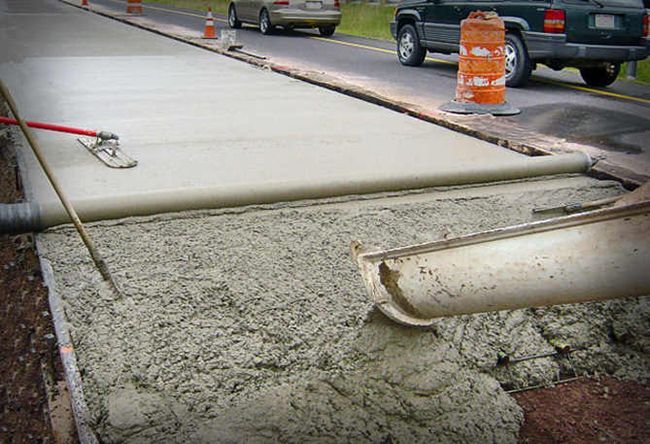
In private construction, NTs 20 is very often used when laying stoves and fireplaces. In addition, it will be the best solution for the construction of a basement, bathhouse or underground garage.
Healthy! It is not recommended to mix NC with other types of cement, since in this case the stressing composition may lose its properties. To prepare a high-quality solution, it is necessary to mix NTs 20 and clean sifted river sand in a 1: 2 ratio. Water is added until a uniform consistency is obtained.
Also, the composition is used if increased requirements for resistance to cracking, frost resistance, durability and waterproofing are imposed on the concrete structure.
Since NTs 20 has good adhesion, it adheres perfectly to the old concrete base. Thanks to this, it is successfully used for the repair and restoration of concrete structures. Sealing seams, cracks and joints and covering the old subfloor with a more durable material increases its water resistance and strength. Based on this, NC becomes the optimal composition for almost any type of work.
Specifications
Each type of ASG has individual qualities and general technical properties. Technical properties and quality standards of enriched sand and gravel minerals are prescribed in GOST 23735-79, gravel properties are specified in GOST 8267-93, parameters of sand components are described in GOST 8736-93.
Standard diameters of gravel in natural formations are from 1 cm to 65 mm. For individual orders, the particle diameter is up to 145 mm. The minimum particle size of the sand component is not less than 0.15 mm, and of sedimentary crushed stone - 0.5 cm.
The enriched rock types have different technical characteristics, depending on the proportions of sedimentary gravel rocks, and there are several types:
- group 1 - up to 20 percent;
- group 2 - up to 35 percent;
- group 3 - less than 50 percent;
- group 4 - not less than 60 percent;
- group 5 - no more than 74 percent.
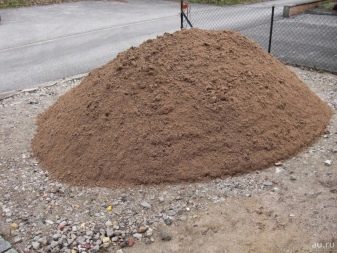

An important element of the building fossil is sand. Durability and resistance to mechanical damage of concrete structures depend on the degree of its cleaning and humidity. The sand extracted from the bottom of water sources does not contain particles of silt, clay and other polluting elements, and is of high quality. Adding sand to the enriched solution qualitatively improves the properties and parameters of the ASG. The moisture content of the sand is one of the main parameters that affects the amount of water added when mixing the solution. The higher the moisture content of the material, the less liquid will be needed for the mortar.
Sedimentary gravel rocks in a natural fossil have different levels of strength and are divided into the following groups:
- M 400 - low percentage of hardness;
- M 600 - medium degree of reliability;
- M 800 - a sufficient level of strength;
- M 1000 is the maximum indicator of reliability with a low content of weak components.
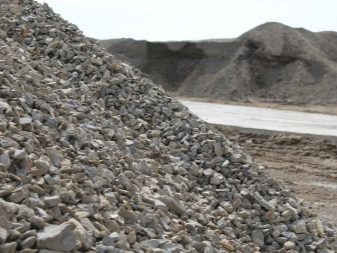
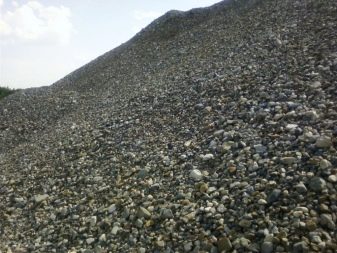
The volume of impurities in a natural fossil cannot be higher than 6 percent, and in enriched - no more 2 percent.
A construction made of building material that meets all quality standards and norms, is capable of withstanding more than 450 freezing and defrosting cycles and not exceeding 10 percent of the loss of the original weight.
The specific gravity of 1 m3 of the mixture must be at least 1,600 kg.
The average value of the compaction modulus of the composition is at the level of 1.2 and is determined by the volume of gravel and the method of compaction of the rock.
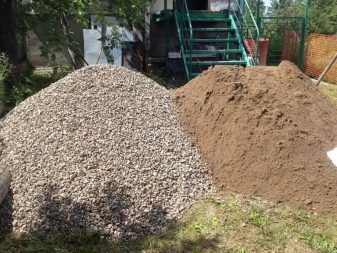
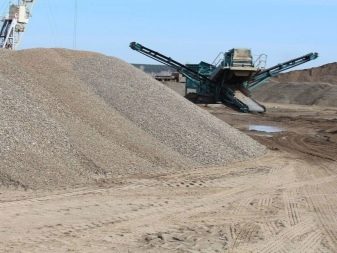
The Aeff indicator is the total specific efficiency coefficient for enriched ASGs, which determines the rate of radiation content.
Sand and gravel mixtures are divided into three classes of radiation safety:
- 1st class - no more than 370 Bq per 1 kg;
- 2nd class - no more than 740 Bq per 1 kg;
- Class 3 - up to 1500 Bq per 1 kg.
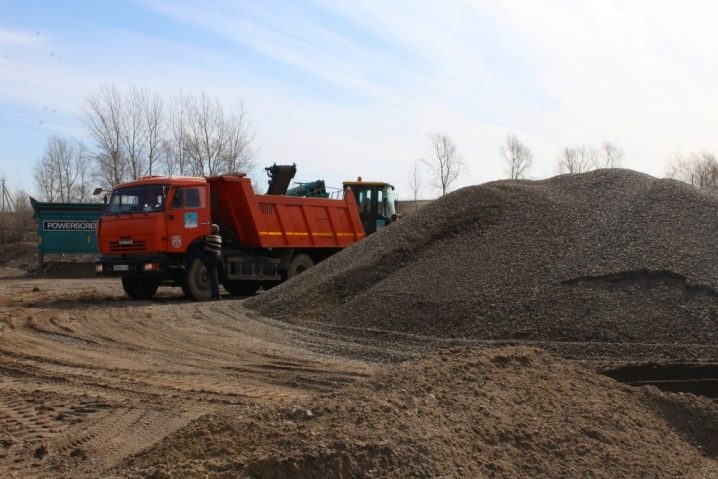
This division into safety classes allows builders to use the material as efficiently and efficiently as possible.
In enriched sand and gravel compositions, it is possible to replace the components of sand and gravel with gravel crushed stone. Crushed gravel is processed gravel. This bulky building material has a rough surface and sharp corners, it is produced by crushing the raw material. Crushed stone increases strength and is used to make asphalt.

Crushed stone mixtures (PShchS) have several types, depending on the particle size:
- C 12 - no more than 10 mm;
- C 2 - up to 2 cm;
- From 4 and 5 - up to 80 mm;
- C 6 - less than 40 mm.
Crushed stone compositions have similar parameters and properties with gravel materials. The most durable and stable types of PShchS are C 4 and C 5.
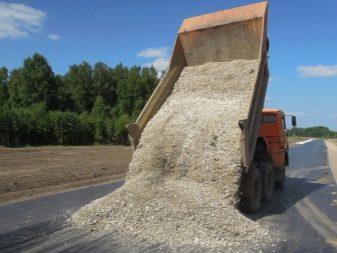

Screed density and specific gravity of cement and sand
For the device of a cement-sand screed (DSP), depending on the criteria set by the operating conditions, various types of material can be used, differing in composition, density and strength:
- heavy aggregate concrete;
- lightweight concrete;
- cement-sand mortar;
- dry mixes.
The density or specific gravity of DSP is determined mainly by the type of aggregate or filler, which is used as sand of various fractions and grain size, granite screening, mineral and polymer additives.
Weight table for different screed compounds.
With heavy filler - granite screening
A filler based on screening out granite crushed stone is the end product of the production of commercial crushed stone with a fraction of up to 10 mm. with granite filler, it is highly durable, frost-resistant and is used in industrial construction. In civil and residential construction, it is used for premises with high operational loads - for basements and basements, garages, utility and storage spaces.
The density of the concrete prepared using granite screening is 1400-2200 kg / m³, which makes it a heavy series. The volumetric weight of a 5 cm thick screed for the specified density range is from 70 to 110 kilograms per 1 m2, which is a significant additional load on interfloor ceilings, floors with a soil or wooden base.
The ratio of the main components for solutions of different density.
Light types of solutions - perlite, polystyrene, granules
In many cases, it will be more effective to use a light screed. It is used in cases where leveling eliminates a large difference in heights, when laying pipelines and communications in the floor, and also when it is necessary to obtain additional heat and sound insulating properties of the floor with a screed.
As a filler for a light screed, several materials are used, the addition of which to the mass of the mixture allows you to obtain various technical characteristics:
- Perlite is a porous rock with good heat and sound insulation, high absorbency, fire resistance, and chemical inertness. For the preparation of building concretes and mortars, expanded perlite obtained by heat treatment of raw materials with a density of about 100 kg / m³ is used, the density of the mixture, depending on the composition of other components, ranges from 400 to 1000 kg / m³.
- Vermiculite is a natural mineral with a layered structure; expanded rock is used in construction.As a filler for mortars and concretes, it has properties and characteristics similar to perlite.
- Expanded clay with a bulk density of 150 to 800 kg / m³, obtained by firing clay or shale. Its characteristics are high strength, frost resistance, chemical resistance, incombustibility, environmental friendliness. Expanded clay crushed stone with a fraction of up to 10 mm is used as a filler or serves as a raw material for the preparation of expanded clay sand.
- Granular polystyrene foam (from polymer raw materials). on its basis it is from 150 to 600 kg / m³, they have a high degree of sound and heat absorption, frost resistance, but low strength in comparison with other light solutions.
1 area of use
This standard applies to ready-made crushed stone-sand, gravel-sand and crushed stone-gravel-sand mixtures used for the construction of pavements, foundations and additional layers of the bases of highways and bases of aerodromes and strengthening of roadsides, as well as for crushed stone used for the construction of coatings. and bases by the way of the spell.
The standard does not apply to aggregates for heavy and fine concrete, aggregates for asphalt mixes, ready mixes for substrates and coatings treated with inorganic and organic binders.
The requirements of this standard set out in clauses -, -, and sections and, are mandatory.
(Amendment, IUS 8-96).
general characteristics
Simply put, the mixture is waste from mining and processing of rock granite and limestone. During crushing, the mixture of wood chips is sifted, crushed to the running size, and cleaned of debris. Ultimately, different types of material are obtained based on the parameters of crushed stone grains.
If there are four or more percent of clay and dust in the composition of wood chips, the material does not correspond to the parameters of GOST. In addition, one more condition is observed - the radioactive background, which should not exceed 300 Bq / kg. This value is considered safe for humans and suggests that the material can be used in the construction of residential buildings.
The main characteristics of SHPP, influencing the packing and transportation, include:
- bulk density;
- bulk density of shpps.
Hence, it follows that not only the size of the fractions of the grains of wood chips is important, but also the indicator of the density of the material, called the coefficient of compaction and characterizing the changes in its volume during tamping, shrinkage and transportation.
The most demanded size is from 2 to 4 cm. This mixture is marked with C6 and has a bulk density of 1.35 tons per cubic meter. If the material is of larger fractions, its compaction will not give a special effect.
 What SHPS looks like
What SHPS looks like
The shape of the grains also matters, it is best if it is cuboid.
The indicators given here determine the quality of the building material. If you neglect them, then you will not achieve good quality in repair or construction work.
Types of material
The crushed stone-sand mixture, being the product of crushing, has grains of different sizes, which determines its fraction. The scope of application of the material depends on this parameter.
ShchPS C1 is a mixture with a grain size of 40 mm. In fact, the product can include fractions from 5 to 10 mm, which occupy most of the volume, the largest are present in an amount of 10% of the total, 10% of dust-like microparticles are also allowed in the composition. The main area of application of the C1 mixture is the arrangement of road surfaces, in particular, when it is required to obtain a perfectly flat, smooth surface. Even unpaved roads can be erected with the help of the material. These are mainly airfield landing strips.
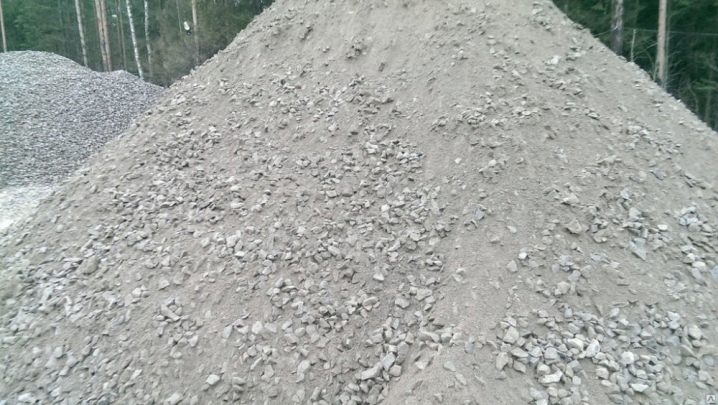

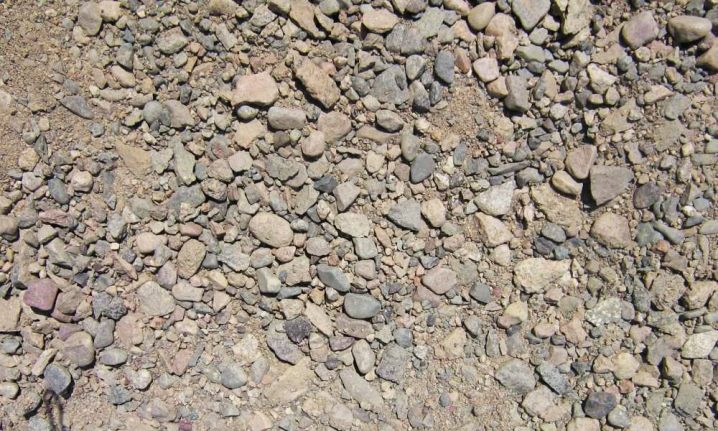
- ShchPS S4 includes sifted quarry sand and crushed stone granules with a fraction of 80 mm. The mixture is used for residential construction, since the radiation indicators of the product do not exceed 300 Bq / kg.This is a high-quality material, convenient for storage and transportation, you can work with it in any climatic conditions. It is used to create road surfaces, ballast prism of railway and tram tracks, and strengthen road shoulders.
- The C5 mixture has a fraction of 40 to 80 mm. This is a high-quality bulk product in high demand, the main volume of which is made up of 40-60 mm particles with the amount of dust-like additives not exceeding 4%. The scope of use of the product is similar to the use of C4, it is also used in the construction of residential and industrial buildings, road surfaces, for concrete work, as reinforcing layers of roadsides.
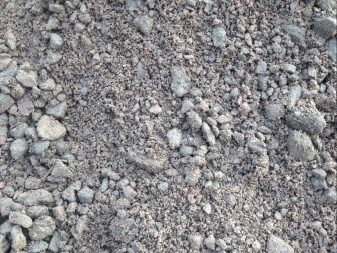
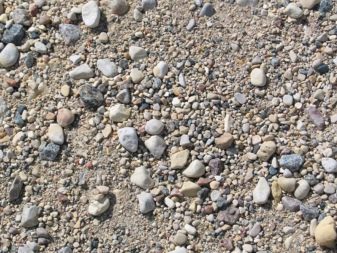
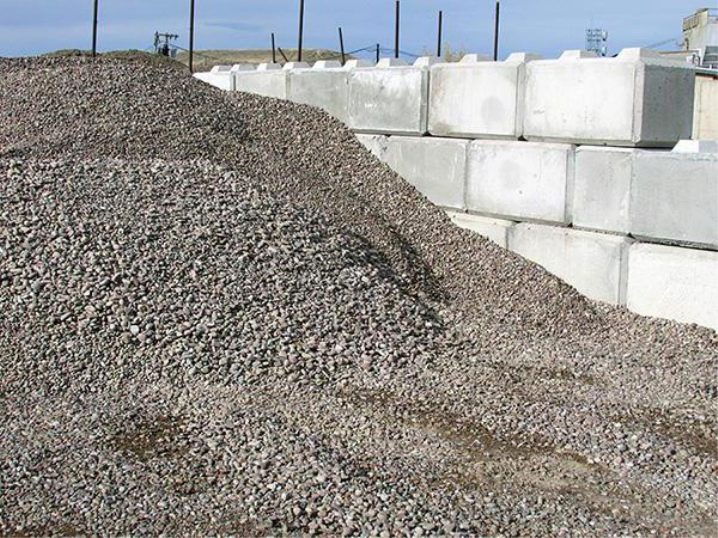
- Products C7 and C8 mainly serve when laying the lower layer of highways and are distinguished by a fine fraction - 10 and 5 mm. The cement reinforcement of the C7 material makes the mixture more resistant to low temperatures and eliminates the appearance of cracks on the coating during operation.
- Mixture C9 has a granule size of 80 mm, in addition to road surfaces, it is used for the construction of parking lots, squares, sidewalks and country roads.
- At the initial stages of road construction, it is allowed to use C10 with particles of 20 mm; it contains up to 30% of quarry sand and 20% of clay and dust.
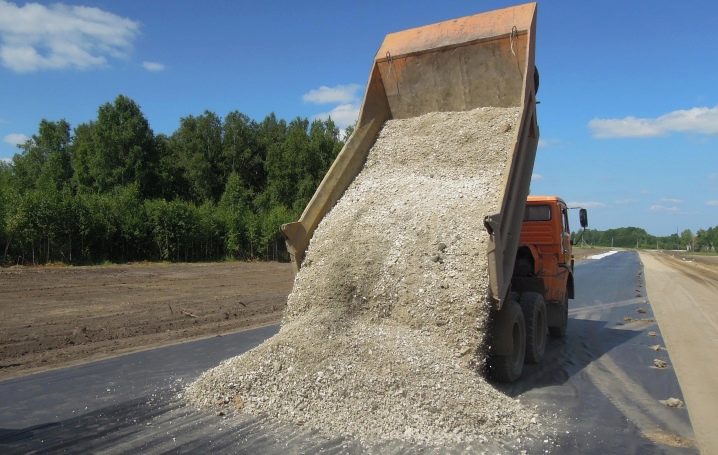
In the next video, you can find out how the C5 SCHPs are obtained and what are its main advantages.
SNiP cement-sand screed
Cement-sand mortars for leveling the floor are widely used in industrial, civil and individual construction. In the latter case, the work is not always carried out according to the project documentation, and the owners often assume responsibility for the selection of materials and the leveling of the base, relying on personal experience, advice from friends or information from the Internet. One of the options for protecting against possible errors in the absence of a project is to refer to the publicly available standards of the construction industry.
As the main criteria for making technical decisions, SP 29.13330.2011 determines the nature and intensity of mechanical influences on the floor, the intensity of exposure to liquids or aggressive environments, the temperature regime of operation, and the provision of sanitary and hygienic requirements. For industrial premises, special requirements are also taken into account, taking into account the specifics of the object - the possibility of dust formation, the accumulation of static charges or sparking, the ability to clean and tidy up.
The information given in the text of the document and in the tables in the appendixes may also be useful for individual developers when choosing the type of floor and its coverage, materials and performance of work, including the device of a leveling screed.
